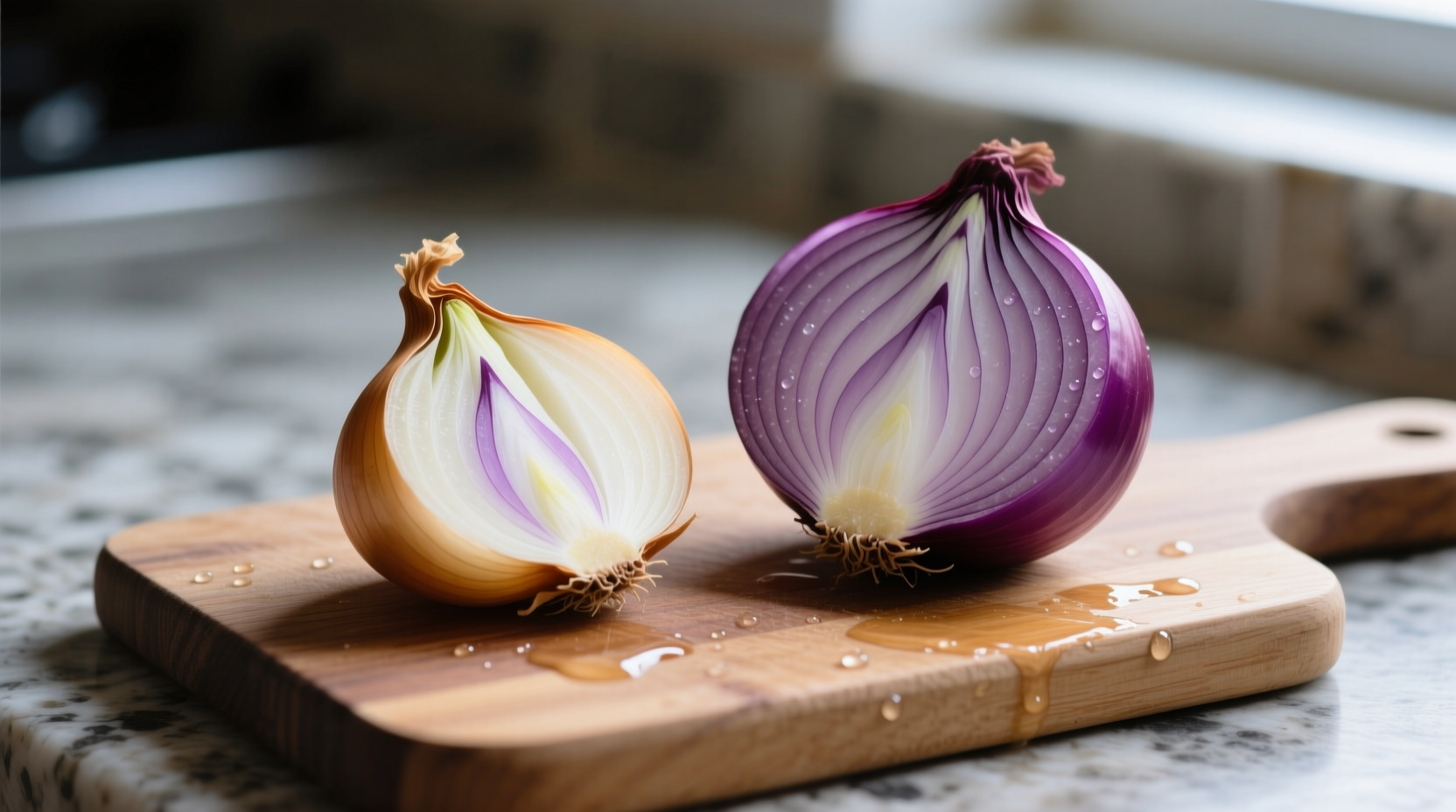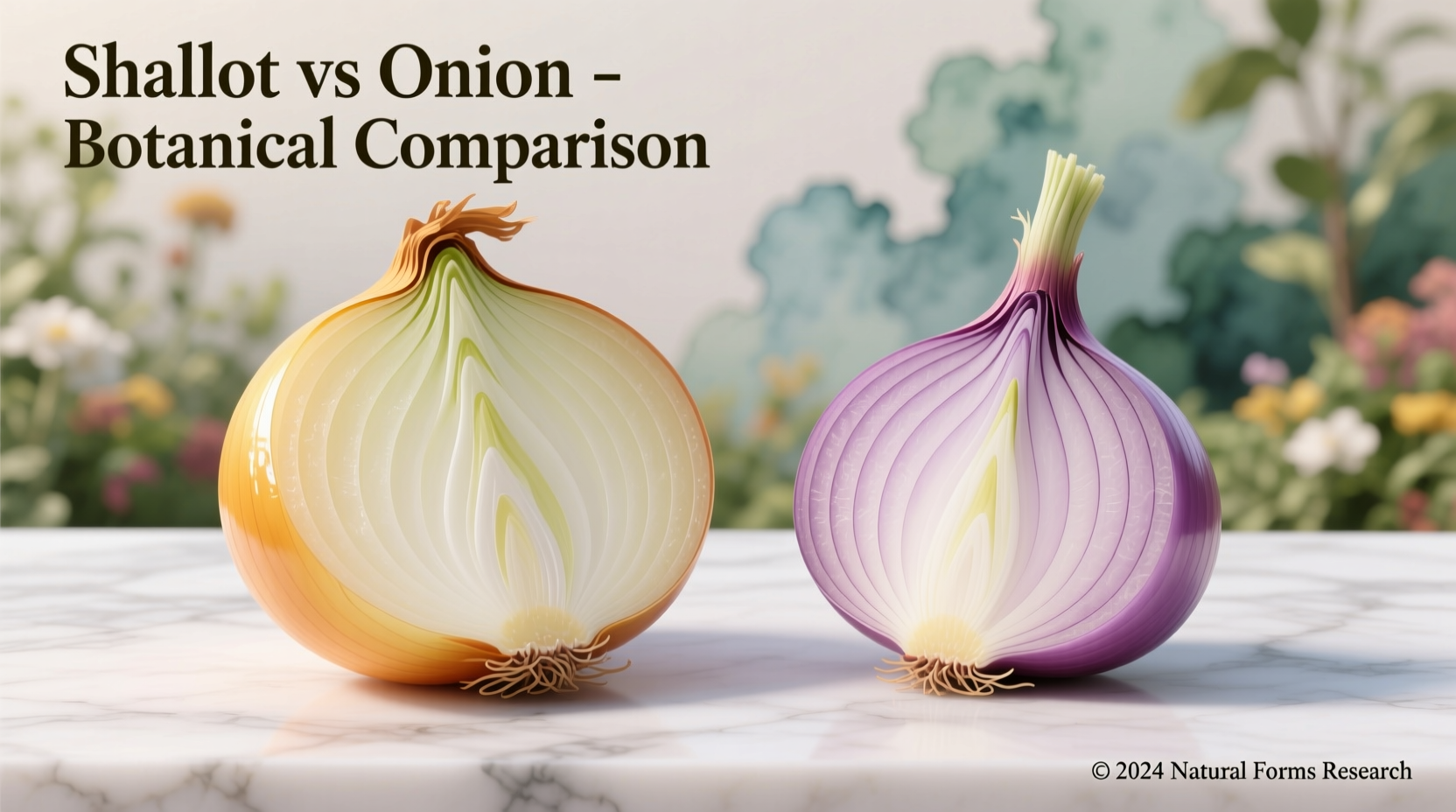Ever stood in the grocery store wondering whether to grab shallots or onions for your recipe? As a chef who's worked in both Michelin-starred kitchens and home cooking environments, I've seen countless cooks struggle with this common dilemma. The truth is, these allium cousins aren't interchangeable without consequences to your dish's final flavor profile. Understanding the shallot vs onion distinction transforms ordinary cooking into professional-level results.
Visual Identification: Spotting the Difference at a Glance
Before we discuss flavor chemistry, let's clarify what actually distinguishes these two ingredients visually. Many home cooks mistakenly believe shallots are just "small onions," but their structure reveals important culinary implications.
| Feature | Shallots | Yellow Onions |
|---|---|---|
| Shape | Elongated, oval with tapered ends | Rounded, spherical |
| Internal Structure | Multiple cloves (like garlic) | Concentric rings |
| Skin Color | Coppery-brown to reddish-purple | Pale golden-brown |
| Flesh Color | Translucent white with pinkish tinge | White to pale yellow |
This structural difference matters because shallots' clove formation creates more surface area, releasing flavor compounds differently when cut. When selecting, look for firm bulbs without soft spots—shallots should feel dense for their size, while onions should have dry, papery skins.

Flavor Chemistry: Why They Taste Different
The shallot vs onion flavor difference stems from their chemical composition. According to USDA FoodData Central analysis, shallots contain higher fructose levels (approximately 7.1g per 100g) compared to yellow onions (5.9g per 100g), creating their characteristic sweetness. They also contain different proportions of sulfur compounds that create that subtle garlic-like undertone.
When raw:
- Shallots: Milder heat with complex sweet-earthy notes (about 1/3 the pungency of yellow onions)
- Yellow onions: Sharp, assertive bite that can overwhelm delicate dishes
When cooked:
- Shallots: Caramelize faster due to higher sugar content, developing nutty, wine-like notes
- Yellow onions: Develop deeper, more robust caramelized flavor but require longer cooking
Practical Substitution Guide: When You Can Swap (and When You Shouldn't)
Professional kitchens maintain both ingredients for good reason—substitution requires strategy. Based on my experience teaching home cooks professional techniques, here's your actionable guide:
When Shallots Shine (Don't Substitute!)
- Vinaigrettes and raw applications: Their milder flavor won't overpower delicate dressings
- Reduction sauces: They caramelize beautifully without burning (try in demi-glace!)
- Finishing dishes: Sprinkle minced raw shallots over seared fish or roasted vegetables
- Delicate egg dishes: Frittatas and quiches benefit from their subtle sweetness
When Onions Work Better (Skip the Shallots)
- Long-simmered dishes: Soups, stews, and braises need onions' robust foundation
- Caramelizing in quantity: Onions yield more volume for French onion soup
- High-heat cooking: Onions withstand aggressive searing better
- When budget matters: Onions cost about 60% less per pound than shallots
Professional Chef Techniques: Maximizing Each Ingredient
Understanding the difference between shallot and onion goes beyond substitution—it's about technique. Here's what separates amateur from professional results:
Shallot-Specific Techniques
Because of their delicate structure, shallots require special handling:
- Dry brine before roasting: Toss with salt 15 minutes before cooking to draw out excess moisture for better caramelization
- Use the whole bulb: Unlike onions, shallot skins contain valuable flavor compounds—simmer skins in stocks for subtle depth
- Minimize cutting time: Their high enzyme activity means they oxidize faster—cut just before use
Onion-Specific Techniques
Maximize yellow onions' potential with these pro methods:
- Vertical slicing: Cut root-to-stem to minimize tear-inducing compounds
- Dry before cooking: Pat slices dry for better browning when caramelizing
- Add acid early: A splash of vinegar at the beginning of caramelization prevents burning
Nutritional Comparison: Health Implications
While both belong to the Allium family, their nutritional profiles differ meaningfully. According to USDA FoodData Central (accessed September 2025), per 100g serving:
| Nutrient | Shallots | Yellow Onions |
|---|---|---|
| Calories | 72 kcal | 40 kcal |
| Carbohydrates | 16.8g | 9.3g |
| Dietary Fiber | 3.0g | 1.7g |
| Vitamin C | 15.0mg (25% DV) | 7.4mg (12% DV) |
| Quercetin | Higher concentration | Lower concentration |
Shallots contain approximately 30% more quercetin, a flavonoid with antioxidant properties. However, yellow onions' lower calorie density makes them preferable for volume cooking. Neither should be considered a significant protein or fat source—both excel as flavor foundations with modest nutritional benefits.
Storage and Shelf Life: Practical Kitchen Management
Proper storage dramatically impacts usability. From my experience managing restaurant inventories:
- Shallots: Last 1-2 months in cool, dark, dry place (60-65°F/15-18°C). Do not refrigerate whole—moisture accelerates spoilage. Once cut, store in airtight container for 7-10 days.
- Yellow onions: Store 2-3 months under same conditions. Their thicker skin provides better protection. Cut onions last 7-10 days refrigerated.
Signs of spoilage differ slightly:
- Shallots: Soft spots develop faster; green sprouts indicate aging but remain usable if firm
- Onions: Mold appears first at root end; slimy texture means discard immediately
For long-term storage, freeze both after sautéing—raw frozen alliums develop unpleasant textures.
When Budget Meets Quality: Smart Shopping Strategies
Understanding the shallot instead of onion decision isn't just culinary—it's economic. Based on 2025 USDA market reports:
- Shallots average $4.50-$6.00 per pound versus onions at $1.50-$2.50
- Shallots yield about 25% less edible portion after peeling
- Peak season for both is late summer through fall (best prices and quality)
Smart substitution strategy: Use onions for 80% of your base flavor, then finish with 20% shallot for complexity. This delivers professional results at home-cook prices—a technique I teach in my cooking workshops for maximizing flavor on a budget.











 浙公网安备
33010002000092号
浙公网安备
33010002000092号 浙B2-20120091-4
浙B2-20120091-4